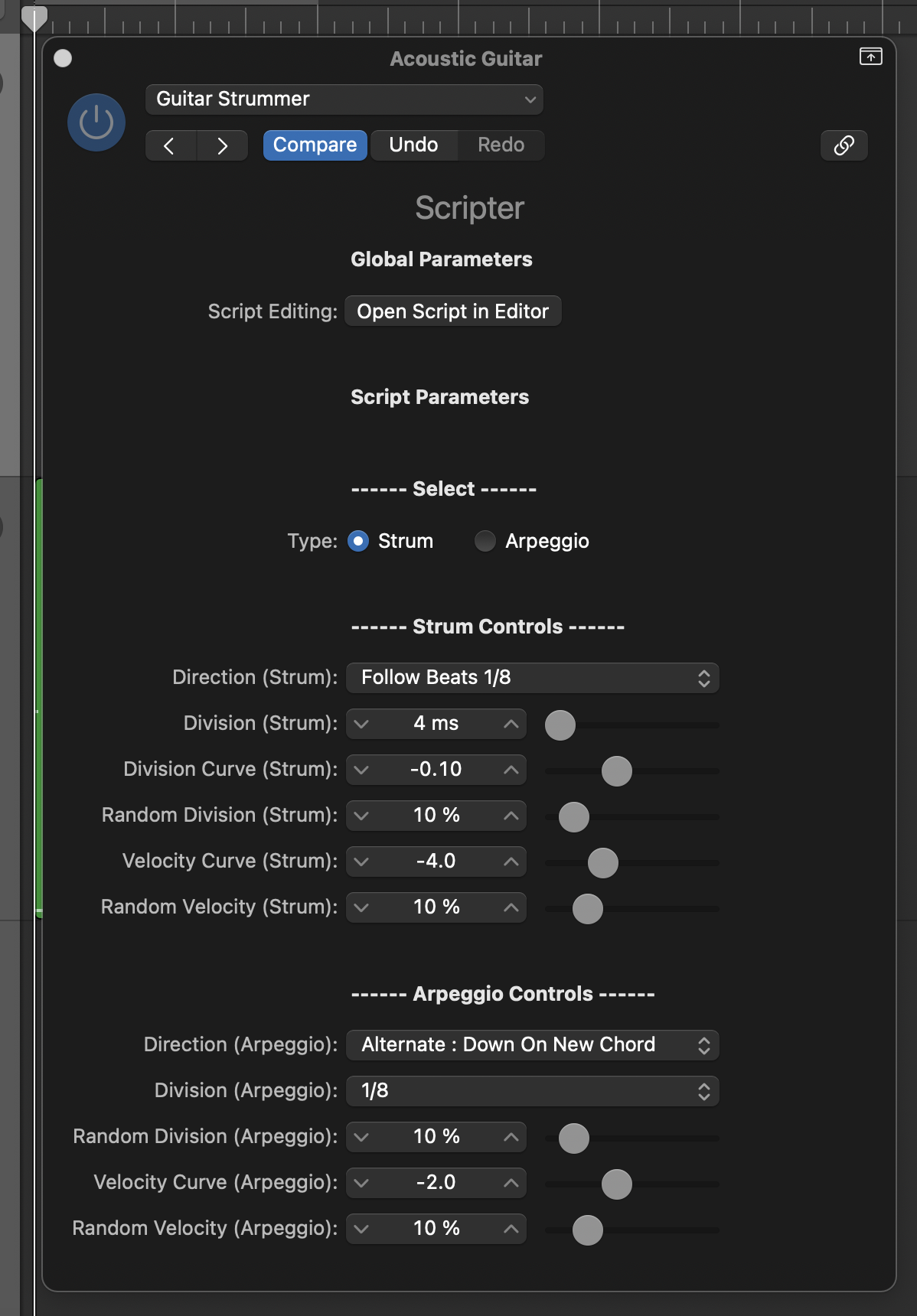App for macOS. Version 6.5.3. System Requirements: macOS 12.3 or later, 6GB of available storage space for minimum installation or 72GB of storage space for full Sound Library installation. Latest update to version 10.7.6 made December 14th 2022. https://www.apple.com/logic-pro/
Often in music education at all levels two things are at odds regarding the playing and recording of guitar: one’s proficiency on the instrument itself and the prevalence of guitar in western popular music. In this context, the term popular refers to music that has been widely appraised as the most significant and culturally influential in western culture within the last 60 years relative to other music created the same respective year.
The Scriptor plug-in found in Logic Pro allows users to load and use factory or user-created scripts to process or generate MIDI data in real time and through playback. Think of this particular plugin as an opportunity to look under the hood of Logic Pro and add in MIDI-facing facets that a user may want but not have found elsewhere in the program using JavaScript. In the case of the guitar strummer preset, the software allows for harmonic information to be inputted as a block chord. Once the information is put into Logic, the scripter applies a series of filters to quantize the information and then offers control over multiple parameters to augment the information. And all of this is possible without any coding or scripting expertise. In the case of the Guitar Strummer, the Scripter simply runs the preset java scripts telling the program to change how the MIDI information is heard. The most easily audible alteration that is applied to the MIDI information through the use of this preset mimics the displacement of the start of the individual notes that are played as if individual strings were being struck discretely and sequentially by a strumming tool like a pick or a hand. The Guitar Strummer Preset does this through a complex set of controls that allow for a user to manage parameters like the direction that strings are being strummed, the range of velocities that strings will be strummed, and the amount of time dividing the striking of each string.

Figure 1: Guitar Strummer preset in Scriptor Plugin of Logic Pro
The combination of controls found in the scripter plugin allows for a user to engage with music that would typically be played by a guitar in two important ways. First and foremost, this plugin allows for quantized MIDI information, all of which would be played at the exact same moment, to be sequentially delayed. Subjectively, this is half of the battle when a producer at any level is aiming to make MIDI sequenced material sound real. The second way is that controls allow for is a deep musical adaptation of the playing to the specifics of a particular piece – most significantly, tempo and dynamic range. For example, the difference in the strum division would be significant between a piece that is at 120 BPM and a piece that is at 85 BPM. The difference in milliseconds translates into a viscerally-felt locked-in groove – exactly what we should strive for at all levels and in all styles/genres.
Figure 2: Video clip of two contrasting strumming divisions
The capabilities of this plugin are significant in the worlds of pedagogy and andragogy. We are able to more closely align our pedagogical practices to the everyday lived musical culture of our students without the barrier of guitar proficiency. I have experienced numerous instances in which a student or peer strays away from using guitar patches because they can't make them sound real, or at the very least, good, and subsequently they don't use guitar in their creations more broadly because they don't how to play guitar and have no way of including non-sampled guitar motifs in their work. In no uncertain terms, this type of plugin, and this plugin specifically, has the power to change the way that we facilitate culturally responsive music learning spaces through technology.


